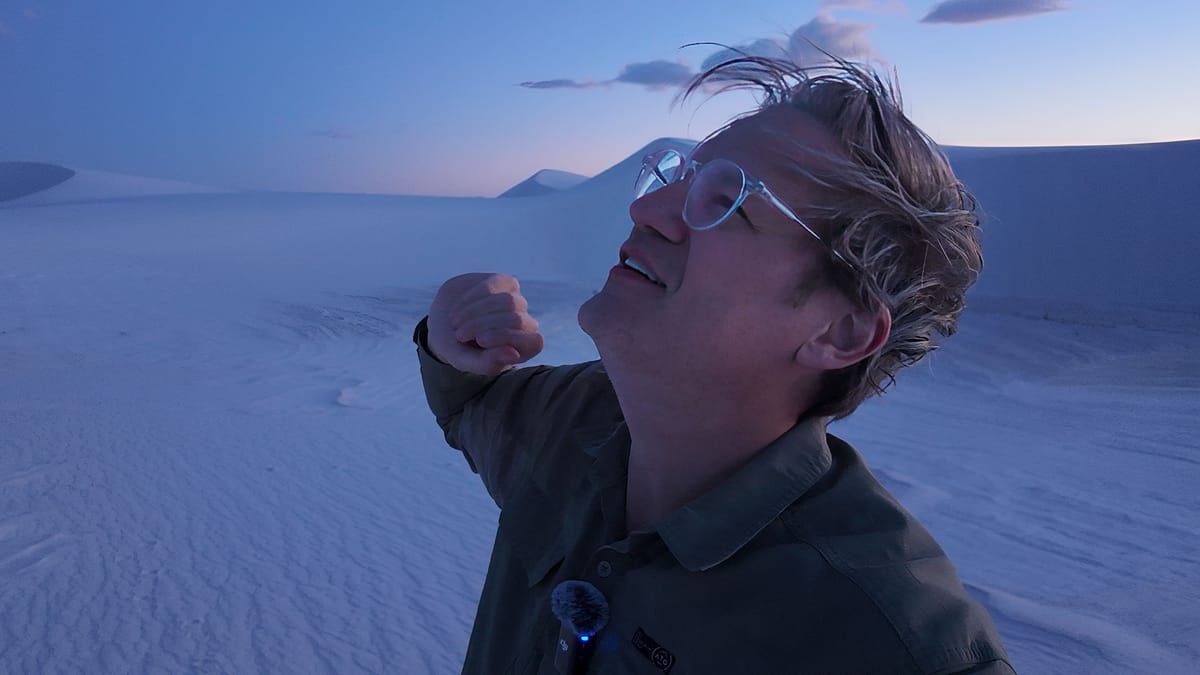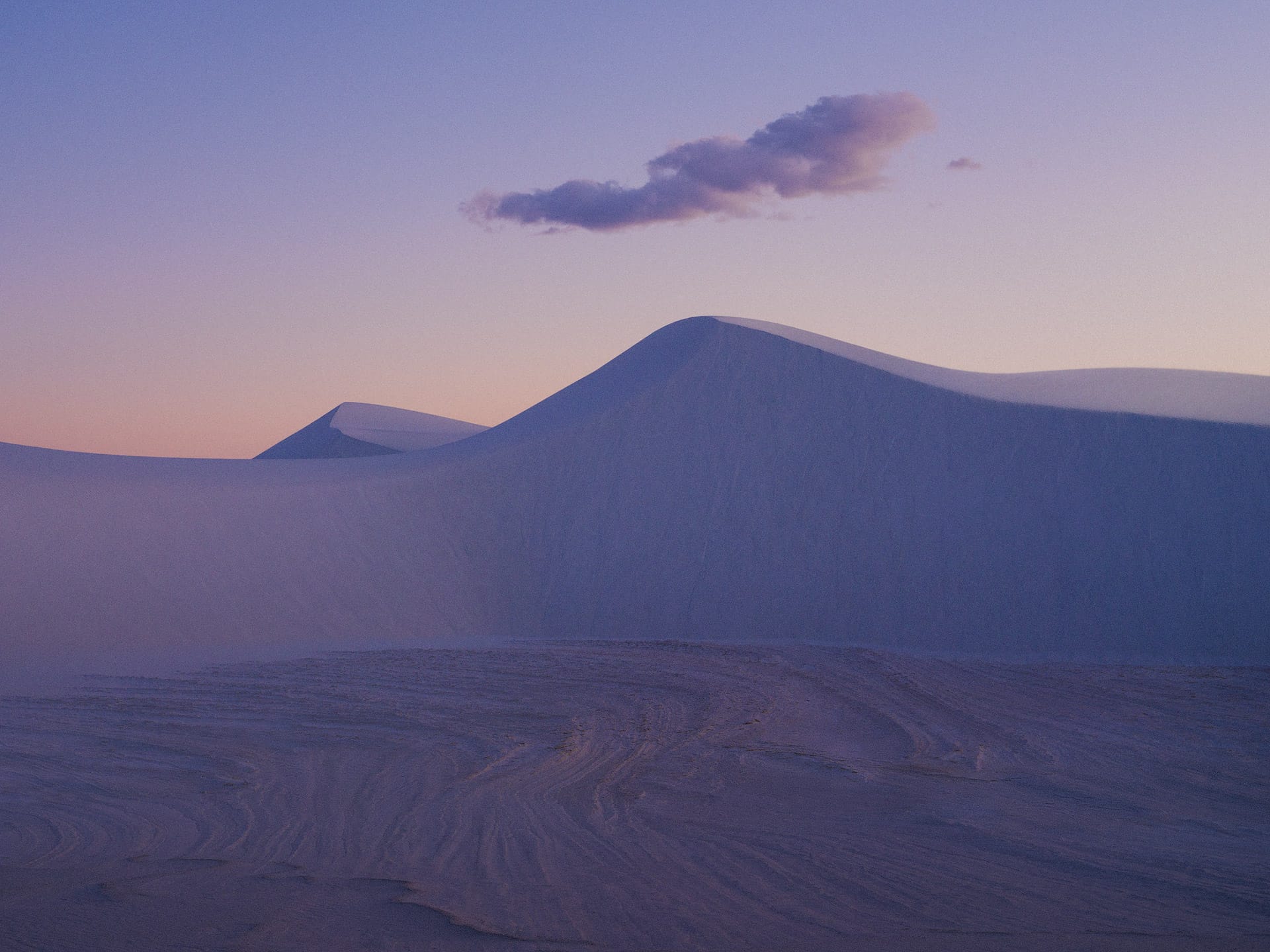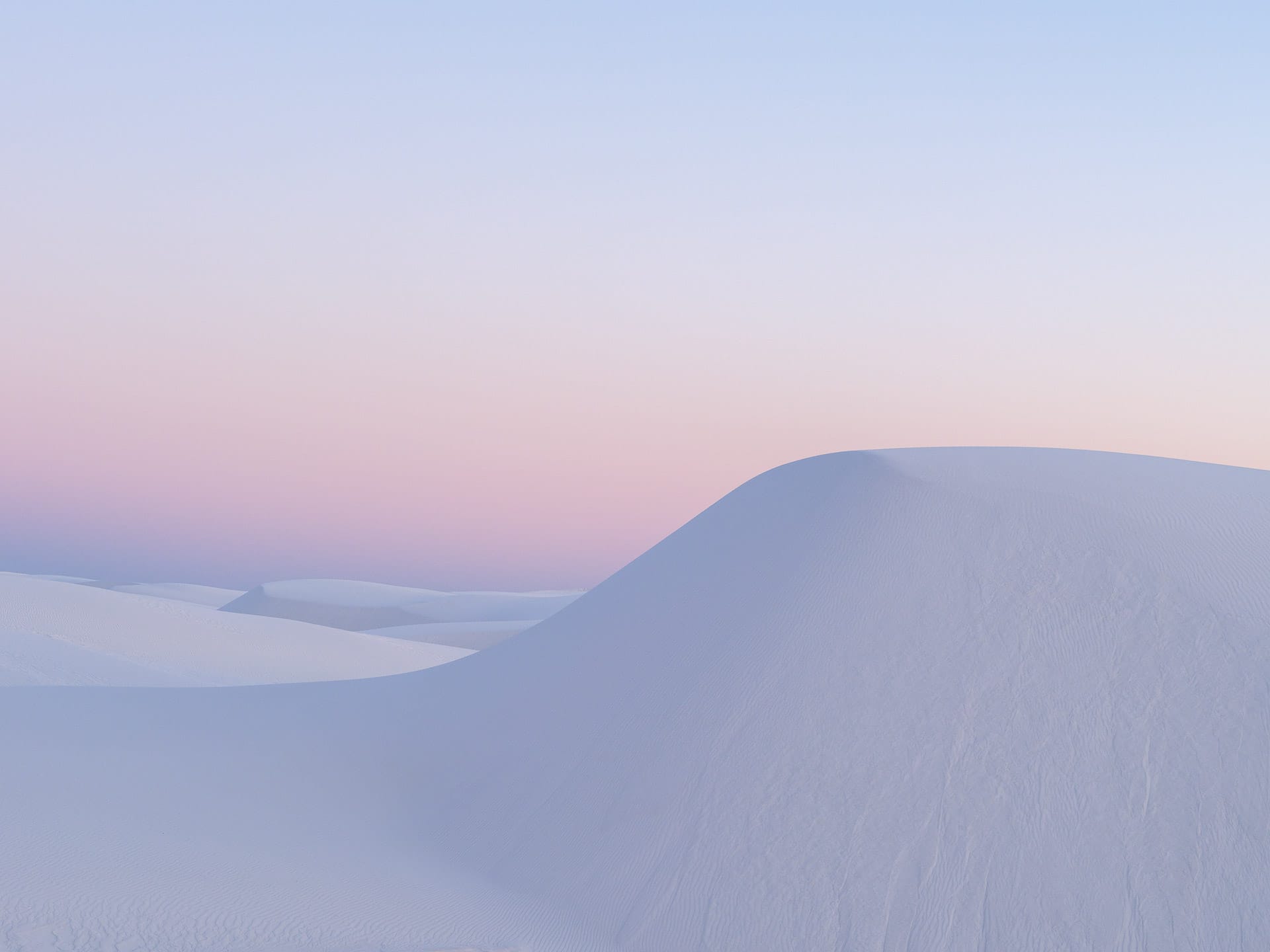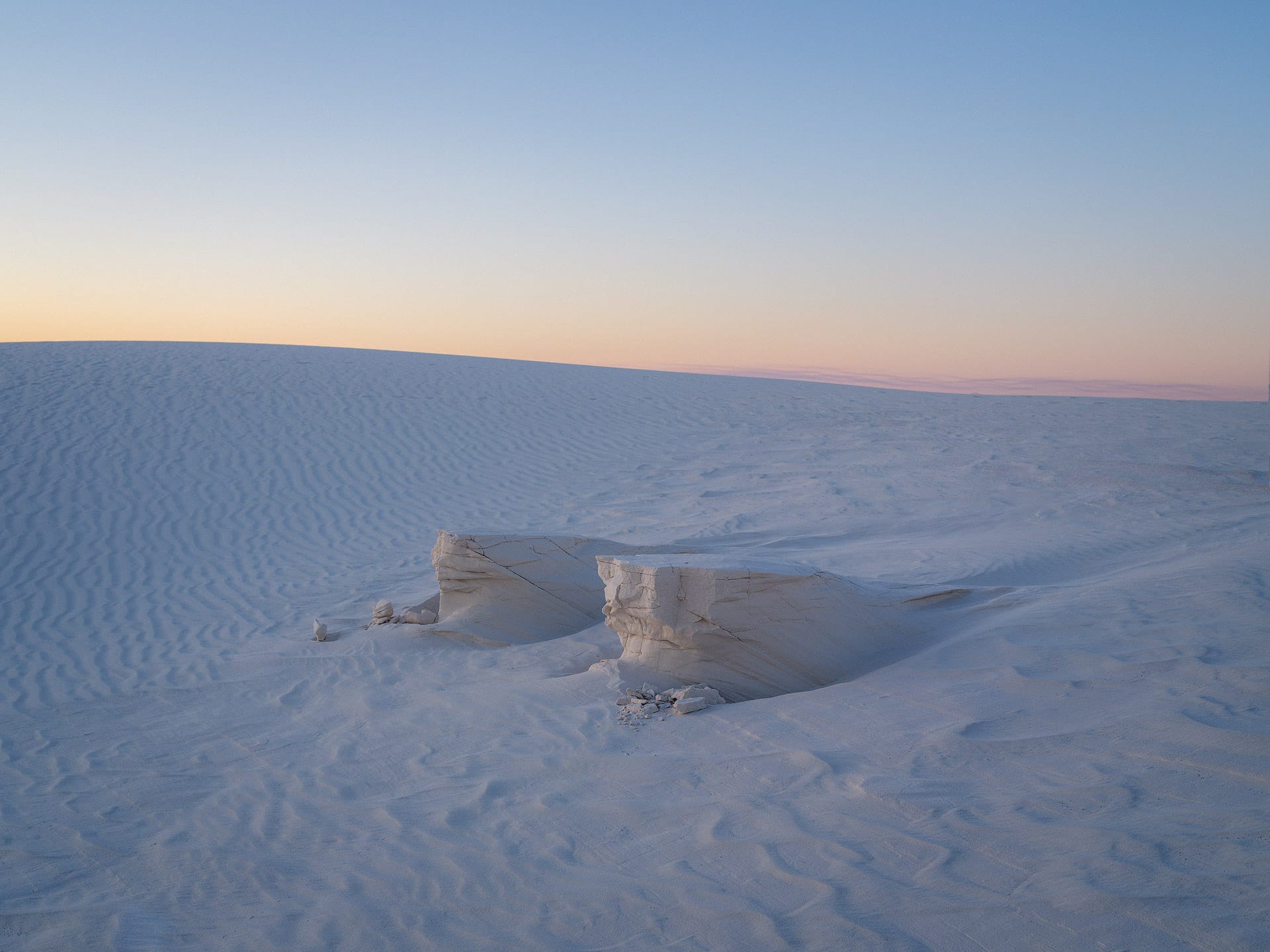It doesn't get better than this: White Sands, 2024
Hunting for pristine dunes and great color in White Sands National Park, New Mexico

Truth be told, I'm not the biggest fan of national parks. Or, I should clarify, photographing national parks, because their popularity has exploded since Covid in 2020; attracting millions of visitors a year. National parks are often highly restrictive as well; forcing hikers and photographers to stay on established trails and sidewalks. Camping overnight is often not allowed either, and when there is a campground to stay in, it likely sold out months prior.
Thankfully, White Sands is different. It's out of the way in southern New Mexico (away from more popular national parks like the Grand Canyon, Zion, etc), so it does not attract as many visitors (I've never seen a line of cars at the gate, unlike other national parks). Visitors are also free to hike pretty much wherever they want, and unlike other parks that more or less look the same year to year (which can lead to similar photos from everyone who visits), the dunes at White Sands are in a constant state of flux; changing from one year to the next.
Case in point, on my recent trip to White Sands, I used GPS coordinates to revisit a dune I photographed last year. To my surprise and delight, the dune was gone. I could wax philosophic about the temporal state of life, decay, rejuvenation, and what not, but put simply, I was pleased by the dunes absence, for it meant there were new dunes and compositions all around me to explore and I wouldn't be repeating myself photographically.

I have photographed White Sands multiple times, and when conditions are just right, the dunes can appear surreal and wondrously beautiful. My favorite time to shoot is just after sunset when the sun drops behind the San Andres mountains and the sky lights up in hues of orange, cyan, and purple. Warm gradients and great color don't always happen (some blue hours can be meh and gray), but on a good night, it can be magical.
All sand dunes reflect light and change color at different hours of the day, but the dunes at White Sands are different because they're composed of white gypsum. These tiny crystals originate from the erosion of the San Andres Mountains and can be traced back to the Western Interior Seaway, a vast inland sea that once covered the area over 100 million years ago. Adding to its historical significance, White Sands is also home to the oldest fossilized footprints in North America, dating back at least 23,000 years. This is also the area where Oppenheimer and his team conducted their first "Trinity" atomic weapon test in 1945, as depicted in Christopher Nolan's film.
(Another fun historical fact — White Sands was also used as the home planet for David Bowie's alien protagonist in The Man Who Fell To Earth. How perfect.)
The gypsum's neutral tone acts like a mirror to the sun and sky. On clear, bright days in mid-afternoon, the dunes appear brilliant white and neutral, much like snow. As the sun descends in the sky, the dunes transform into shades of yellow and orange. After sunset, they take on a pastel hue, as seen in the image below. Without question, my most favorite time to shoot.

Also of interest are the textures and details in the dunes and slopes where the soft, wind-blown gypsum hardens and produces unusual waves and delicate rock formations, as seen below. These formations are few and far between, but exciting to stumble across. (By the way, the image below was captured minutes after the above, and illustrates how different the sky can look towards the south and north, respectively.)

By the way, I'm currently writing an ebook about photographing White Sands, which will contain extensive information about the park, where my favorite areas are, creative ideas and approaches, what to pack (and not pack) in a camera bag, and more. I'll let you know when it is available. For now, if you'd like to participate in my most recent trip to White Sands, check out my latest video (also embedded below).



